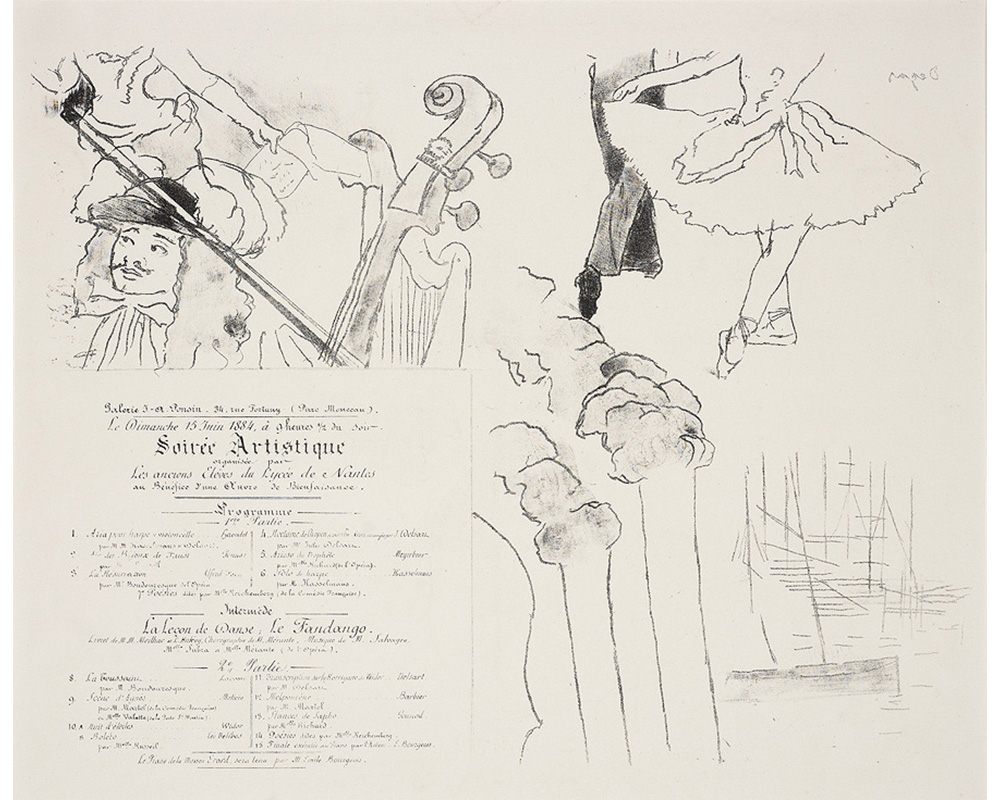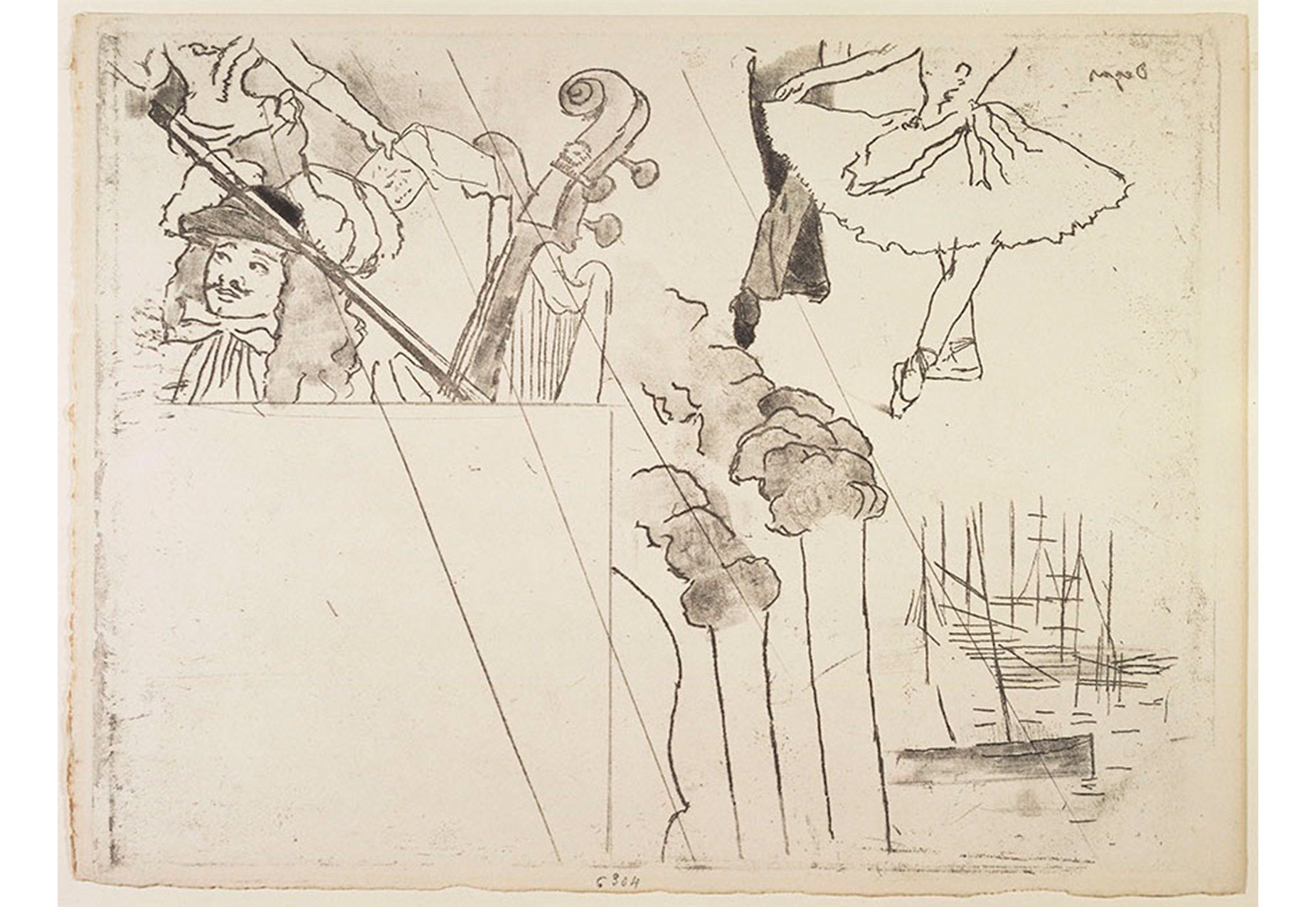
Degas Doppelgängers: SCMA Lithographs From Same Series as Gardner Heist Drawings
Guest blogger Maggie Kean is a Smith College student, class of 2014, majoring in Art History with a concentration in Museum Studies. She is the Student Assistant to Maggie Lind, the Associate Educator for Academic Programs.
French Impressionist Edgar Degas is regarded as one of the greatest painters of the nineteenth-century, producing an inspiring body of work thematically divergent from that of his predecessors, which earned him a posthumous reputation as the darling of the movement. A prolific draughtsman as well as painter, Degas’s vast output of drawings dynamically rendering his iconic dancers, bathing nudes, and jockeys are as distinctive as his paintings. Yet while many conceive Degas as the master of tulle and soft, luminescent flesh—daubed onto canvas in rich jewel-tones or lustily marked out with pastels—few realize that Degas was also a closet printmaker of great mastery.
Though his printmaking record indicates that his pursuit of the medium was patchy, extant works span Degas’s career from his nascent aspirations to history painting in the 1850s through to his late and most expressive works of the 1890s. His prints ranged in medium from etchings and lithographs pulled by professional printers to monotypes that he executed himself. A largely underappreciated and thus neglected form of printmaking, Degas is recognized for pioneering the monotype medium, which conflates painting with printmaking through the painterly application of ink directly onto a plate that is then pressed onto paper. While his printed subject matter did not vary much from his standard repertoire of women and horses, the works themselves reveal Degas’s virtuosity in a breadth of mastery unknown even at the time—only a handful of such prints were ever displayed during his lifetime.

Edgar Degas. French, 1834–1917. Study for a Program for an Artistic Evening (Projet de Programme), 1884. Soft ground etching and drypoint on off-white wove paper. Gift of Abraham Kamberg. Photography by Petegorsky/Gipe. SC 1962.8.2.
The SCMA has two such prints in the works on paper collection at the Cunningham Center—a set of lithographs from 1884 entitled Program for the Soirée Artistique des Anciens Élèves du Lycée de Nantes (Program for the Evening for Former Art Students of Nantes Secondary School). One of the former students of the Lycée was a friend of Degas and asked him to create the program – a process that yielded four black chalk drawings, four etchings, and the final lithographs. Two of the drawings, which are a clear precedent to our lithographs, are among the works stolen in the famous heist of the Isabella Stewart Gardner Museum. With the recent efforts of the FBI to again publicize the crime and recover the works, we thought we’d highlight the parallel works in our collection in solidarity with the Gardner (To view the Gardner drawings and more information on the theft, please visit the FBI website: http://www.fbi.gov/news/stories/2013/march/reward-offered-for-return-of-stolen-gardner-museum-artwork/image/hi-res).
The Program was directed toward a broad audience, and as such, the visual language Degas utilizes is straightforward in its reference to the entertainment promised for the Soirée, with some marginal imagery symbolic of the town of Nantes. The print was clearly thrown together quickly, a somewhat compositionally ambiguous and sketchy image; in 1891, when the École des Beaux-Arts displayed one of the lithographs in an exhibition surveying contemporary lithography without Degas’s permission, he was outraged that his body of printed work should be represented by such a poor example.
Nevertheless, the Program and his opinion of it offer a glimpse into the ways in which Degas’s work reached the general public. His major works were typically displayed at the Salon for an audience comprised primarily of the bourgeoisie, artists, and academics. A colloquial document such as Program not only enjoyed a wider viewership, but also illuminates how Degas consciously adjusted the quality of his work based on the audience he created it for.